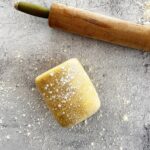There’s something undeniably comforting about flaky pastry.
This recipe makes 500 grams of delicious flaky pastry. Enjoy x
Whether it’s wrapped around a savory filling or baked into a sweet treat, its crisp, buttery layers always deliver that perfect crunch with every bite. While it may not be as lofty as puff pastry, flaky pastry has its own rustic charm, making it a go-to for bakers seeking an easy, reliable, and versatile dough.
In this blog post, we’ll dive into the world of flaky pastry, exploring what sets it apart, how it’s used, and tips to make the most of this humble yet delicious dough.
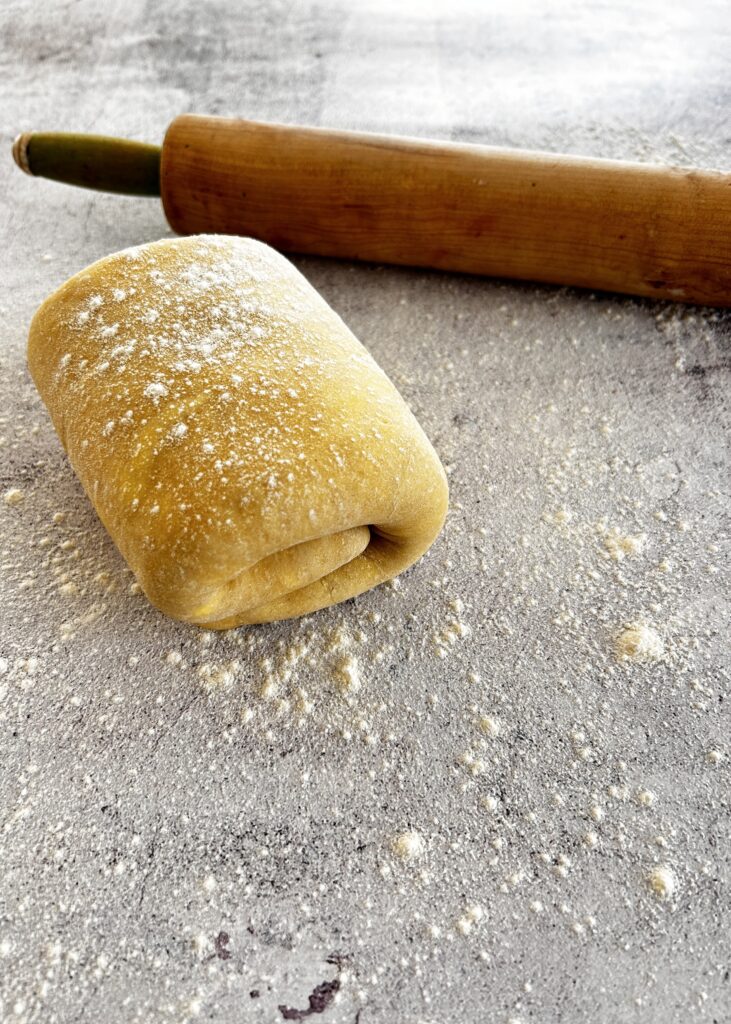
What is Flaky Pastry?
Flaky pastry is a light, buttery dough known for its characteristic crispness and texture. Unlike puff pastry, which involves an elaborate folding technique to create many layers, flaky pastry is made by incorporating cold butter into flour, leaving visible chunks in the dough. These butter pockets melt during baking, creating steam that lifts the layers, resulting in that delightful flaky texture.
It’s often considered a simpler and more approachable alternative to puff pastry, but it’s no less delicious!
Why We Love Flaky Pastry
- Versatility: Flaky pastry is one of those all-purpose doughs that works equally well for sweet or savory creations. Whether you’re making pies, hand pies, tarts, or turnovers, it holds up beautifully while still giving you that light, crispy texture.
- Ease of Preparation: While flaky pastry still requires a few basic techniques (keeping everything cold is key), it’s far less time-consuming and fussy than puff pastry. There’s no need for repeated folding and turning, making it a great choice for beginner bakers or those who want homemade pastry without all the effort.
- Rustic Appeal: Unlike puff pastry, which often looks pristine and precise, flaky pastry has a charmingly rustic look. The uneven layers give it a homemade feel, and the slight imperfections only add to its appeal. It’s the kind of pastry that makes you think of comfort food, bringing warmth to everything from pies to quiches.
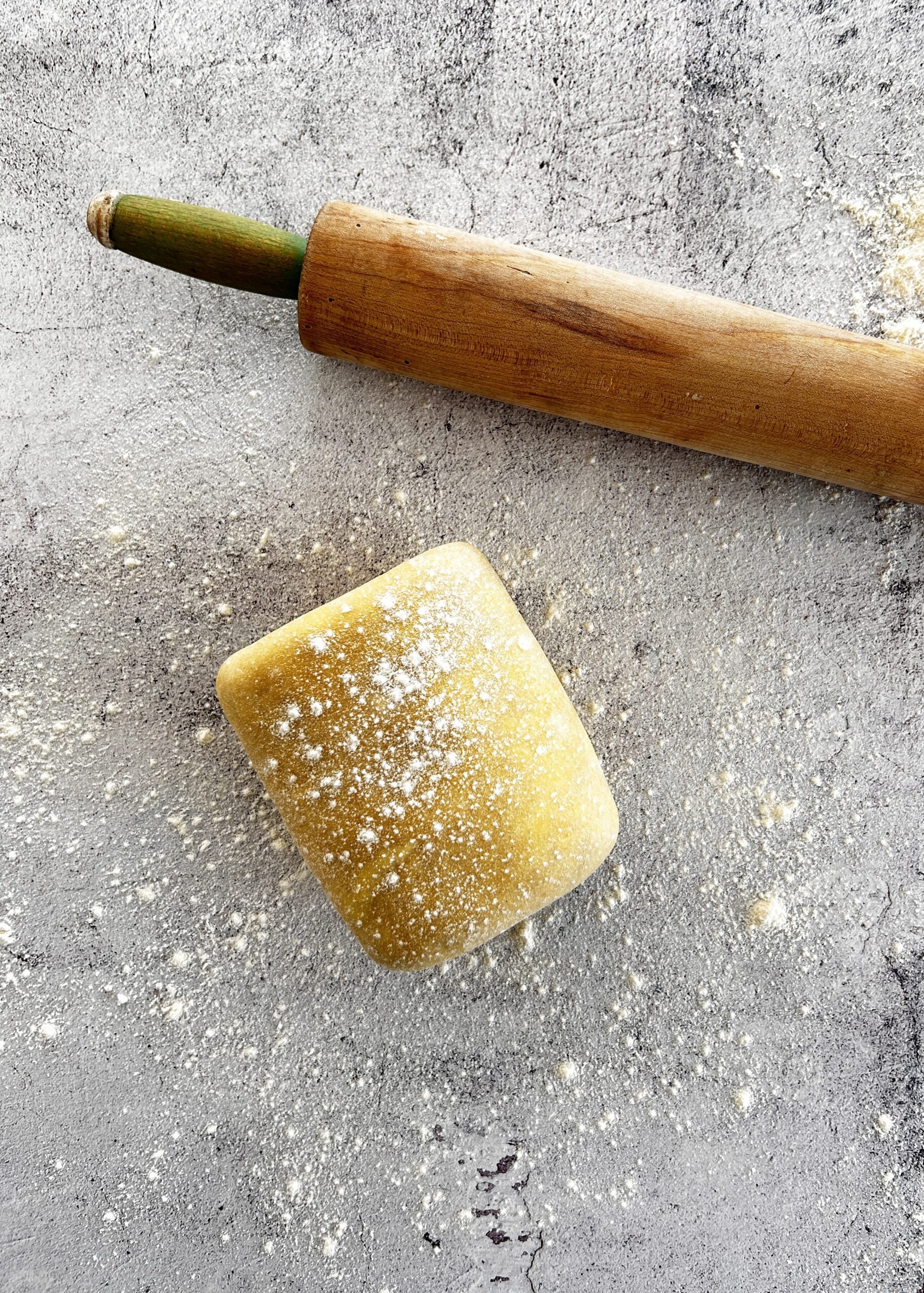
How to Use Flaky Pastry
One of the best things about flaky pastry is how adaptable it is. Here are just a few ways you can use it in your kitchen:
- Savoury Pies: Flaky pastry is a classic choice for pie crusts, especially for savory dishes like chicken pie or meat pies. It holds up well to fillings without becoming soggy, while still providing a melt-in-your-mouth finish.
- Tarts and Quiches: Use flaky pastry as the base for savory tarts or quiches. Its sturdy structure makes it the perfect vessel for creamy fillings, yet it remains light and crispy after baking.
- Sausage Rolls: For something even simpler, flaky pastry is often used for sausage rolls. The dough is wrapped around seasoned sausage meat, then baked until golden brown—perfect for parties, snacks, or a quick meal.
Tips for Perfect Flaky Pastry
- Keep Everything Cold: The secret to great flaky pastry lies in keeping both the butter and water cold throughout the process. Cold butter creates the steam that gives the dough its flakiness. If the butter melts into the dough too early, you’ll lose those distinctive layers.
- Handle with Care: Like many pastries, flaky pastry benefits from a light touch. Overworking the dough can lead to tough results, so mix just until it comes together and avoid kneading.
- Chill Before Baking: After shaping or filling your flaky pastry, chill it in the fridge for at least 20 minutes before baking. This helps the butter firm up, ensuring that the pastry holds its shape and doesn’t shrink in the oven.
- Egg Wash for Color: Brushing the top of your flaky pastry with an egg wash (a beaten egg mixed with a little water) before baking will give it a beautiful golden color and a shiny finish.
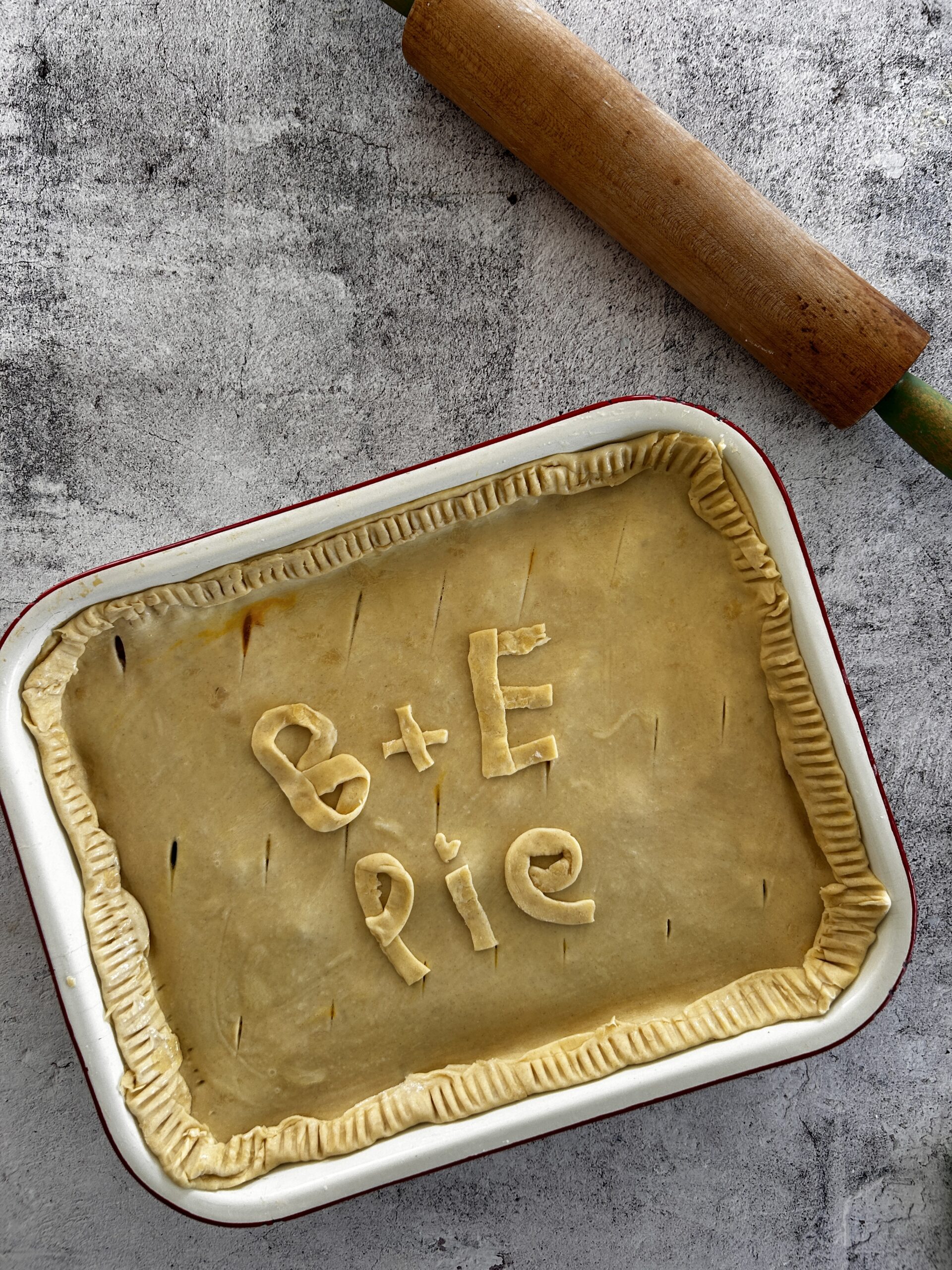
Why Flaky Pastry Deserves a Spot in Your Kitchen
Flaky pastry may not always get the same attention as its puff pastry counterpart, but it’s a workhorse in the kitchen, beloved for its simplicity, versatility, and delicious results. Whether you’re baking savoury pies, pudding, tarts, or simple bacon and egg pie, this dough can do it all!
Next time you want to make a homemade pastry treat, consider reaching for flaky pastry. It’s easy to prepare, endlessly adaptable, and packed with buttery goodness that elevates every bite.
Is there a difference between puff pastry and flaky pastry?
Yes, there is a difference between flaky pastry and puff pastry, even though both are layered, buttery, and often used for similar purposes. The key differences lie in the technique of preparation, the number of layers, and the resulting texture.
Flaky Pastry
- Preparation: Flaky pastry is made by mixing cold butter (or other fat) into the flour, leaving small chunks of butter visible in the dough. The dough is then rolled out and folded over a few times, creating fewer layers compared to puff pastry.
- Layers: Flaky pastry has fewer layers than puff pastry. The butter is not as evenly distributed, leading to a less uniform rise and flakiness.
- Texture: As the name suggests, flaky pastry results in a crisp, crumbly, and flaky texture. It doesn’t rise as much as puff pastry, and the layers are less distinct, with a more rustic appearance.
- Common Uses: Flaky pastry is often used in pie crusts, turnovers, and sausage rolls.
I have this recipe along with a short pastry recipe in my book ‘Winter Warmers’ which you can purchase in the shop on this website or in any good bookstore near you.
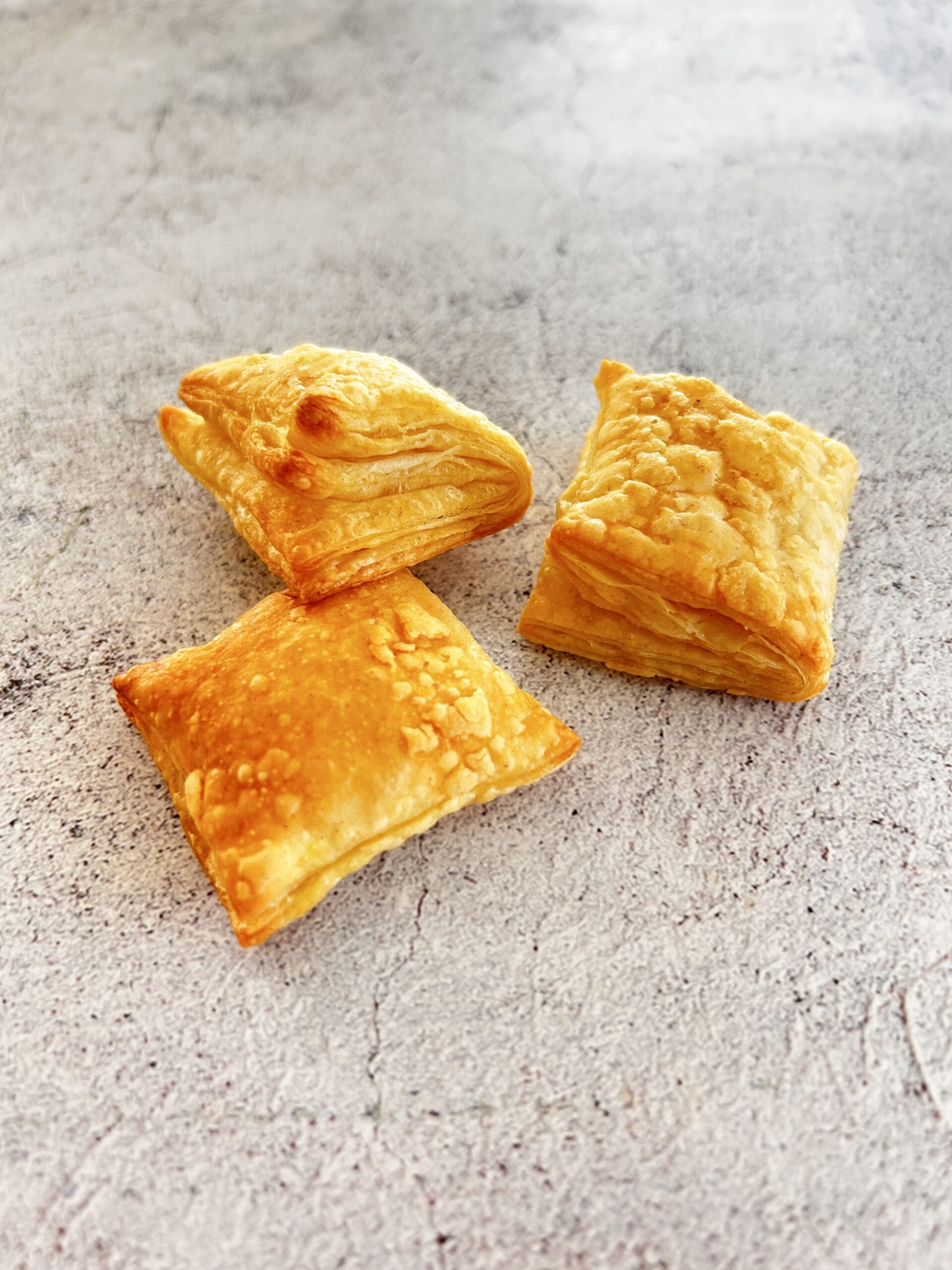
Puff Pastry
- Preparation: Puff pastry involves a more labor-intensive process of laminating butter between layers of dough. The dough is rolled out, folded (in a process known as turns), and chilled repeatedly. This creates very thin layers of dough separated by thin layers of butter.
- Layers: Puff pastry can have hundreds of ultra-thin layers due to the repeated folding and rolling of dough and butter. These layers “puff” up significantly when baked, creating a light, airy texture.
- Texture: Puff pastry is lighter and airier than flaky pastry, with more defined and crisp layers. It rises higher during baking, creating a more dramatic “puff.”
- Common Uses: Puff pastry is used in pastries like croissants, Napoleons, palmiers, and vol-au-vents, as well as savory dishes like beef Wellington.
If you would like to make your own puff pastry at home you could try this recipe and method from the Preppy Kitchen.
Homemade Flaky Pastry
Equipment
- 1 medium sized bowl (or cake mixer and whisk attachment)
- 1 grater
- 1 Rolling Pin
- 1 wrap for chilling (or freezing) you pastry
Ingredients
- 300 grams high quality flour
- 1/2 tsp salt
- 200 grams cold butter (4x 50 gram amounts)
- 6 tbsp Cold water (more may be needed)
Instructions
- Divide your butter into quarters and place three quarters back in to the fridge.
- Sift the flour and salt into a bowl and rub in the first quarter of cold butter.
- Add small amounts of cold water and combine to make a firm dough.
- On a clean floured surface roll out the dough into a roughly shaped rectangle until it is about 1 cm thick. At this stage it won’t look pretty.
- Get the second quarter of butter from the fridge and grate it.
- With the short end of the rectangle facing you, place the butter on the bottom two thirds of the pastry.
- Fold the unbuttered end into the middle. Now fold the buttered end to meet the folded edge. Use your rolling pin to seal the ends.
- Now make corrugations along the rectangle by pushing down with your rolling pin.
- Chill for 5 mins.
- Roll out and repeat with the third quarter of butter.
- Chill for 5 mins
- Roll out and repeat with the last quarter of butter.
- Fold into thirds and chill one last time before rolling out.
- At this stage you could wrap and place in the fridge overnight. Or wrap and place in the freezer.
- This recipe makes 500 grams of pastry. Enjoy x
Notes
- I use the whisk attachment on my cake mixer to rub my butter. Just pop the flour and butter in, turn on to a low setting and walk away. It’ll rub the butter to a fine crumb.
- Save and use old cereal wrappers to wrap you pastry in and avoid plastic wrap.

